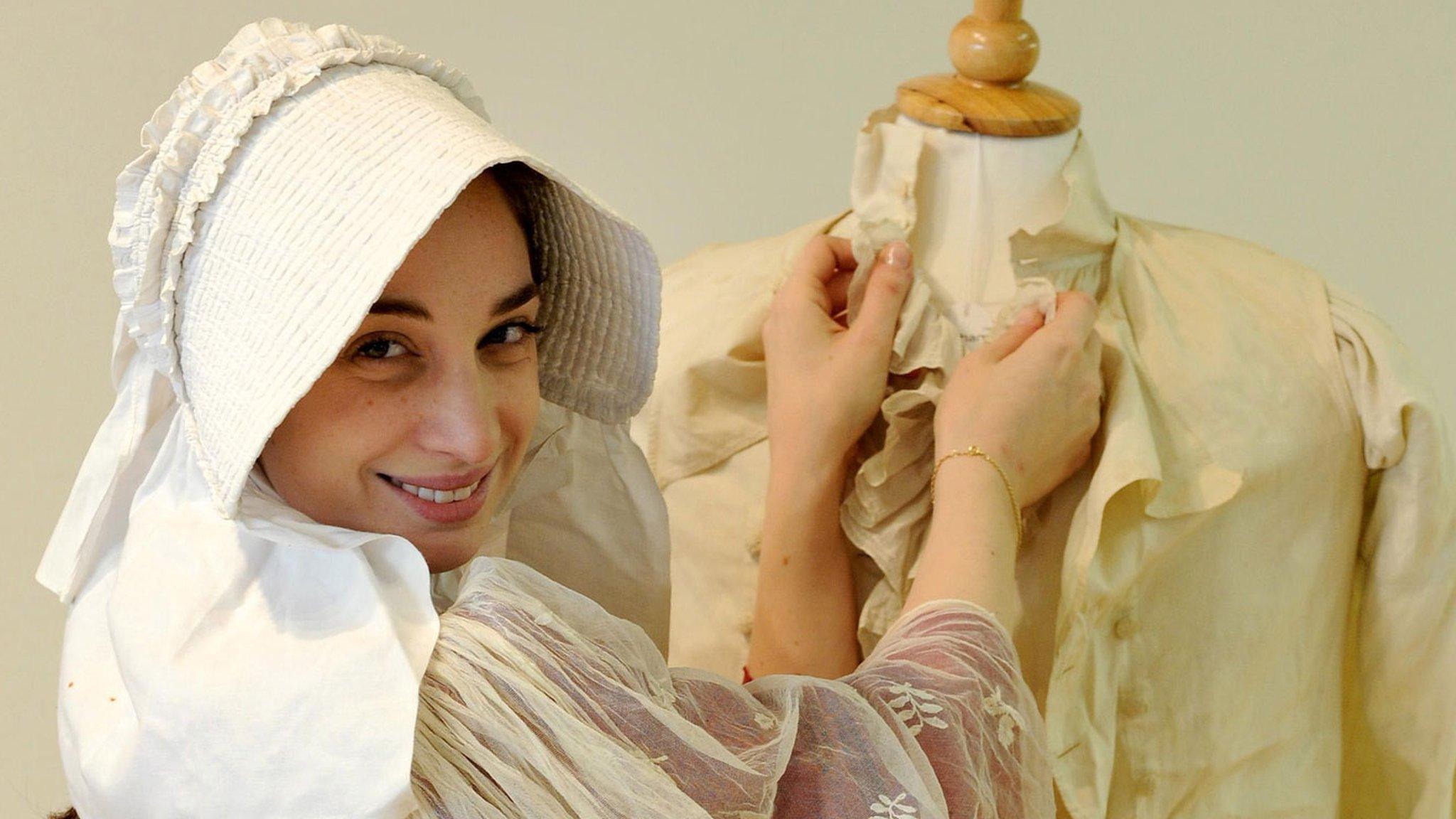Why is Jane Austen trending 200 years after her death?
- Published
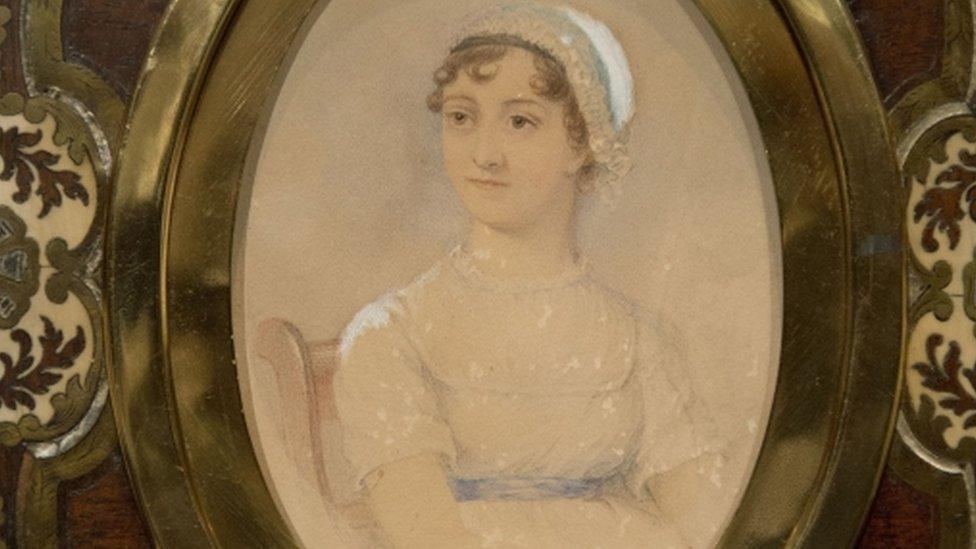
Jane Austen only lived until the age of 41, but released four of her six major novels in the space of four years
The death 200 years ago of celebrated author Jane Austen is being marked nationwide with ceremonies, statue unveilings and a new £10 note design. But in an age of social media, short attention spans and Love Island, what makes a woman who wrote about the 18th Century landed gentry so enduringly popular?
Jane Austen died in 1817, when she was just 41. But in her short life, she exerted more of a lasting influence on British literature and culture than many of her peers who lived twice as long.
Her six major novels take a critical and often humorous look at life in the late 1700s. The tales of life, and love, are filled with irony, and a sense of realism about the era and the characters she wrote about.
Two centuries after her untimely demise, her life and work is being remembered by those who love her novels and want to mark her influence - "janeausten200" is even a trending topic on Twitter.
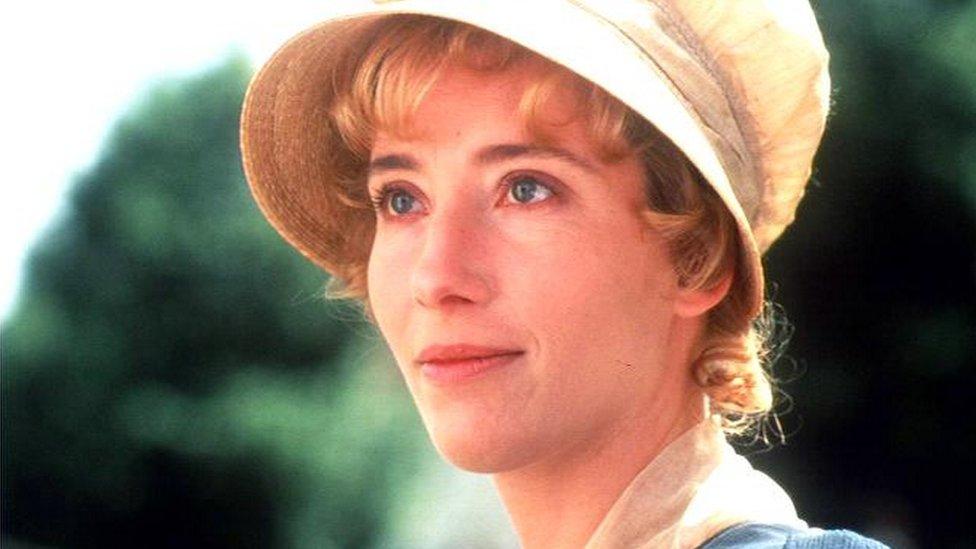
Emma Thompson won an Academy Award for her portrayal in Sense and Sensiblity
"[Austen] is very pertinent even today," said Marilyn Joice, chairman of the northern branch of the Jane Austen society.
"She's writing about people and their problems, their dysfunctional families, why, and even if, women should marry. Those issues were relevant then, and they're relevant now."
Although the drama of the hit ITV reality show, Love Island, seems far removed from the landed gentry Austen depicted, the personalities portrayed, even now, are similar.
They share a common thread because we find them relatable, Ms Joice said.
"She created characters we see today, like a minor character in Northanger Abbey called John Thorpe who thinks he's God's gift and is obsessive about his horse and carriage.
"He's basically just a boy driving a souped-up Fiesta wearing a baseball cap. She just created these characters so brilliantly."
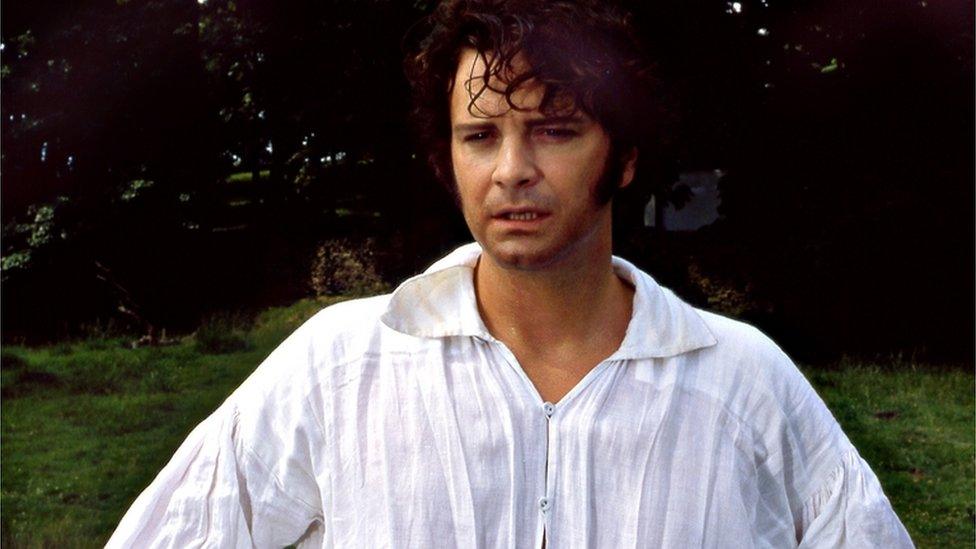
Colin Firth became a heart-throb after appearing in a BBC adaptation of Pride and Prejudice in 1995
Prof John Mullan, Lord Northcliffe Professor of Modern English Literature at University College London, said Austen's enduring appeal boils down to one thing - her writing.
"There are lots of other novels including others by women written at the same time about intelligent young women trying to find the right husband," he said.
"Their content includes lots of the same things Austen was writing about - money and snobbery and financial dependence of women, religion, morality, class.
"All of them put together aren't worth one sentence of Austen - it's her stylistic brilliance, not what she's actually writing about that makes her unique.
"Technically, she was a revolutionary writer, even though we think of her as modest and conservative person."
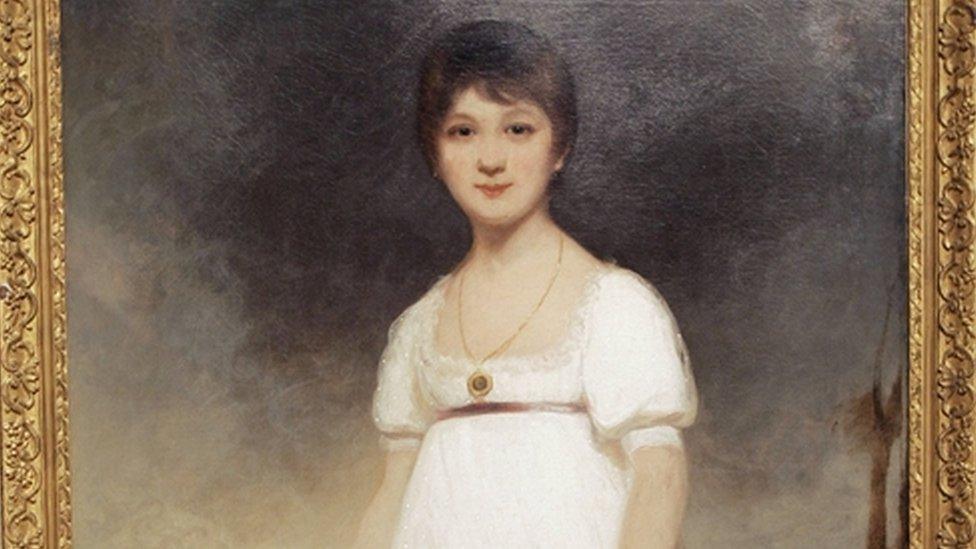
A portrait of Jane Austen painted in 1788 or 1789 shows her as a 14-year-old girl

Jane Austen's novels
1811: Sense and Sensibility
1813: Pride and Prejudice
1814: Mansfield Park
1815: Emma
1817: Northanger Abbey and Persuasion (published posthumously)


Austen's letters to friends and family have become prized collectibles
In recent years, there have been bicentennial celebrations of Austen's life and work, starting in 2011 with the 200th anniversary of the publication of her first novel, Sense and Sensibility.
Like many of her novels, it was adapted for television in the 1980s and made into a film in 1995. In the same year, Mr Darcy and Elizabeth Bennett were brought to life in a BBC TV adaptation of Pride and Prejudice, turning Colin Firth into a heart-throb and cementing Austen's work as TV and film favourites. It was also the year of Clueless, the coming-of-age comedy loosely based on Emma.

You might also like...

"Even that is an indication of her brilliance of a writer - she's the greatest writer of dialogue in the English language," said Prof Mullan.
"In reality, she doesn't bother describing the dresses or the houses or what people look like - she's only interested in the psychology, not the image."
In recent years, her work has been adapted and built upon in a variety of different ways, including the 2016 film Pride, Prejudice and Zombies - based on a 2009 novel of the same name - PD James' Death Comes to Pemberley in 2011 and even Bridget Jones' Diary in 2001, which took inspiration from Pride and Prejudice.
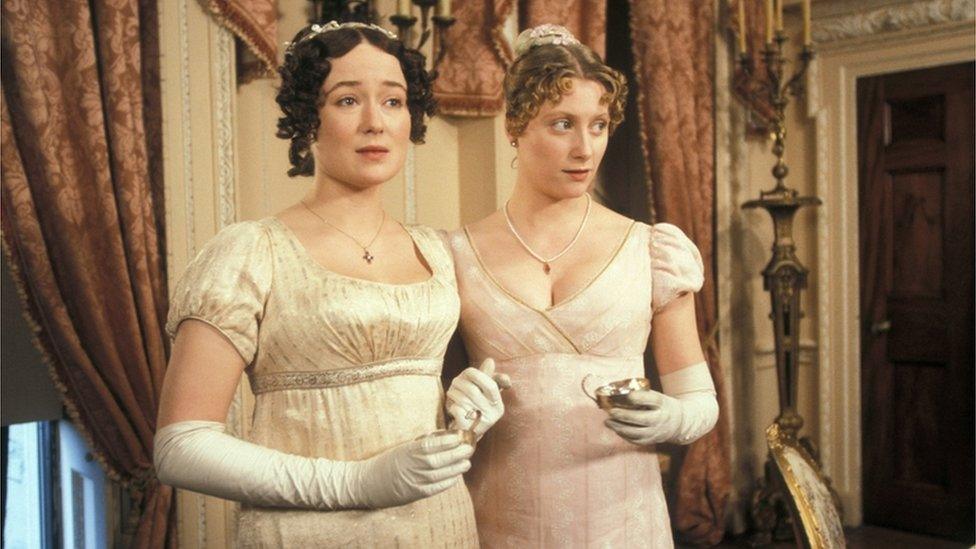
Austen is celebrated for her characters and descriptions of late-18th Century society
During her lifetime, Austen's novels were published anonymously, and although they were popular, she remained obscure and unknown as an author.
After an illness, she died in Winchester in 1817, where she was buried in the north transept of the city's cathedral - a fitting resting place for the daughter of a Hampshire vicar.
Two hundred years later, her death is being marked with a lunchtime concert at the venue, featuring music and instruments of the Regency period, as well as a commemorative church service.
"Lots of people are coming to pay their respects so it will be joyful as well as solemn for those people," said the Very Reverend Catherine Ogle, dean of the cathedral.
"The choral evensong will be a magnificent service using hymns she would have known as well as prayers she wrote herself, so that's a really beautiful thing."
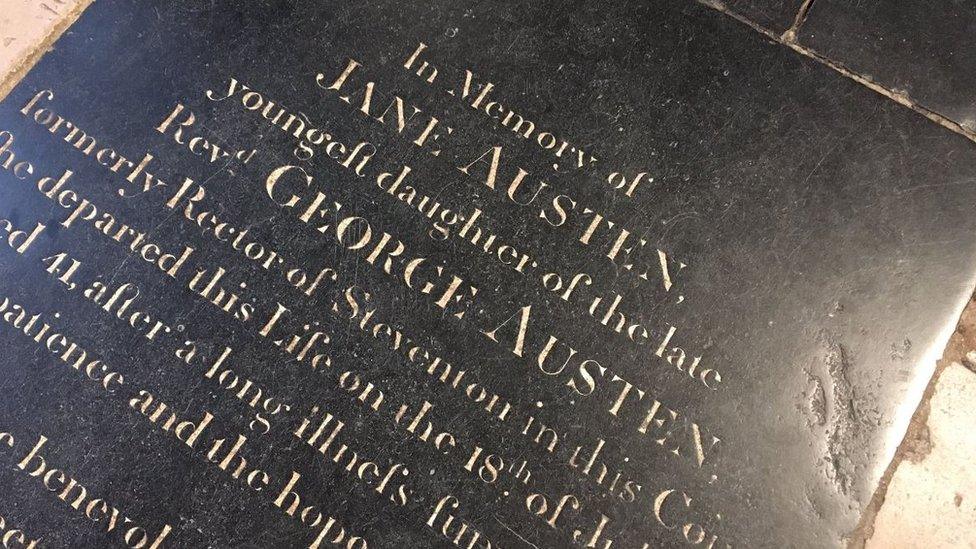
Austen's grave lies in the north transept of Winchester Cathedral
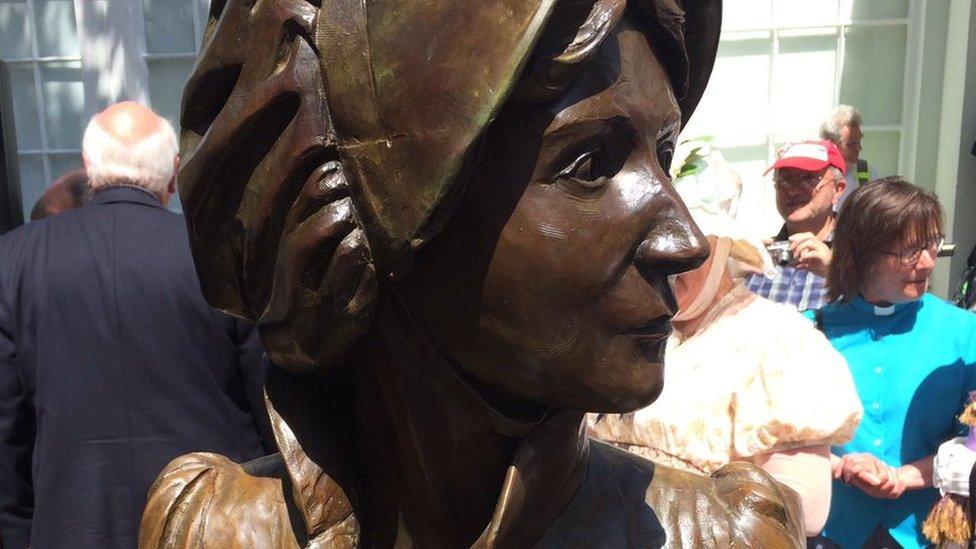
A £100,000 life-sized bronze sculpture of Jane Austen has been unveiled in Basingstoke town centre
Elsewhere, the significant date is being recognised in a number of other ways.
In Torquay, the town's museum is displaying a letter from Austen to her sister Cassandra, which contains the first known reference to her novel Pride and Prejudice, published four years before her death.
A life-sized bronze sculpture of the writer was also unveiled in Basingstoke town centre, near where she grew up.
The £100,000 statue, commissioned by the Hampshire Cultural Trust, was unveiled at a ceremony attended by author Claire Tomalin and Basingstoke MP Maria Miller.
The letter to her sister includes the first reference of the novel Pride and Prejudice
Austen spent the first 25 years of her life in Steventon, where her father was a member of the clergy.
She knew Basingstoke well and attended social gatherings at the Assembly Rooms in Market Square and regularly visited family friends at The Vyne, Oakley Hall and Ashe House.
Some 80 miles away in Bath, the Jane Austen Centre was presented with a £5 note featuring a tiny 5mm portrait of the author.
Micro-artist Graham Short engraved five notes and put four in circulation sparking a hunt for the valuable notes, which are worth about £50,000.
It is not the only note the novelist graces - she also adorns the new plastic £10 note, which was earlier unveiled by Bank of England governor Mark Carney.
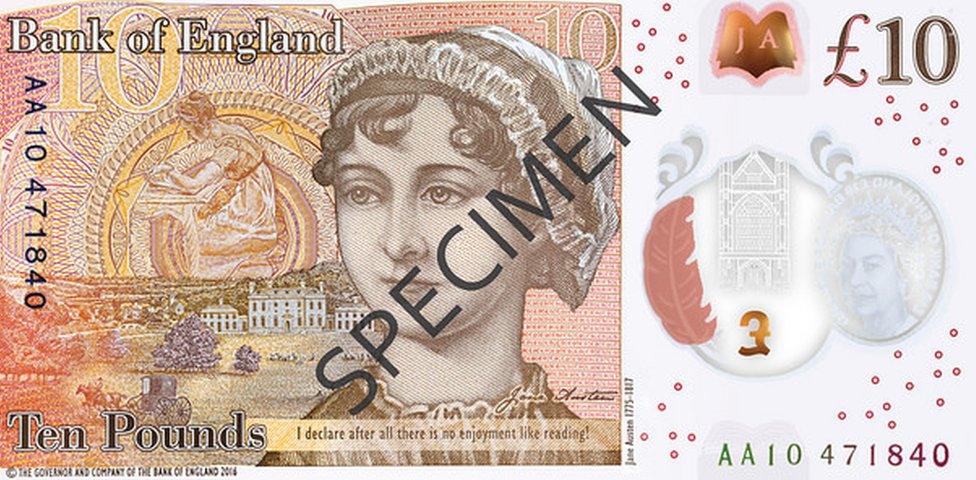
A new polymer £10 note is set to feature Austen's portrait
Though the polymer tender is useful only on UK shores, Austen's currency has international reach.
Prof Mullan has recently travelled as far as Russia and Canada to give talks on the writer.
"Often readers in other countries, especially non-Anglophone countries outside of Europe and the US, think they understand [her] books better than we do," he said.
"The interesting thing is that although there are lots of social conventions underlining her stories, Austen makes those completely understandable to the reader of novel.
"Every time, you discover new things you haven't noticed before, subtleties and connections. They feel inexhaustible."
The professor said what makes Austen's work so special is her ability to constantly surprise readers - even those who have read her works time and time again.
"People who love Jane Austen will always say that - how they read Pride and Prejudice again, and they had never noticed this or that," he said.
"In the end, she was in her lifetime a completely obscure figure who knew no other writers and had no means of publicising what she did. Even though her books were quite successful, nobody knew who she was.
"There was absolutely no reason for her to become famous - except from the fact she's a genius."
- Published18 July 2017

- Published18 July 2017
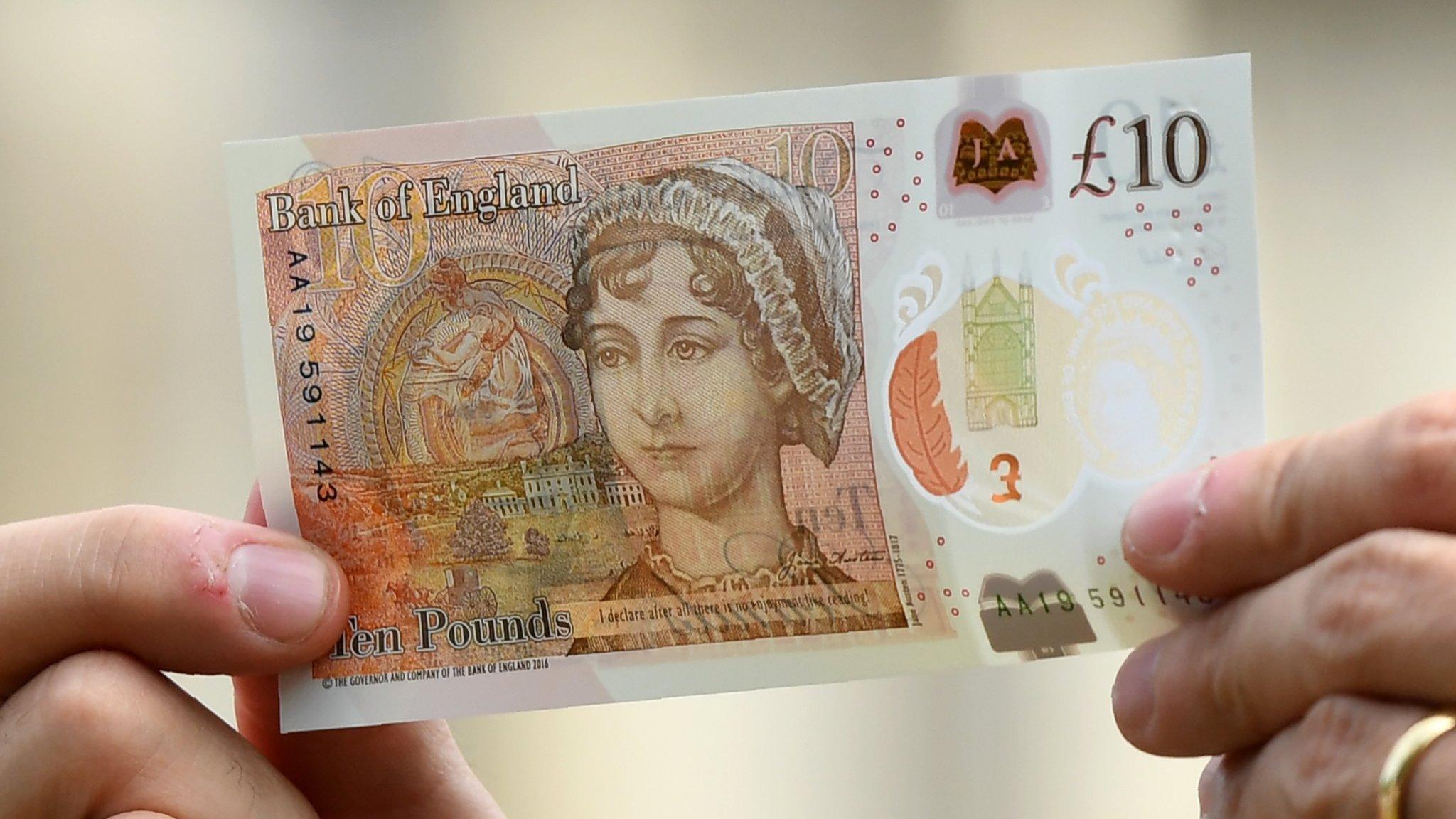
- Published16 July 2017

- Published25 January 2013
